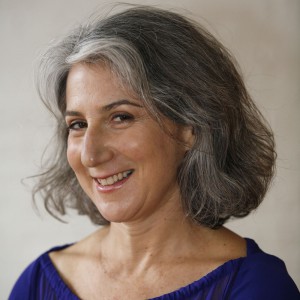Laura Starr
Principal

With over 35 years’ experience working in the New York City area, Landscape Architect Laura Starr is a champion for sustainability, collaboration, and design excellence. As Chief of Design for the Central Park Conservancy, Laura forged consensus among diverse groups of stakeholders to renovate major destinations such as the Harlem Meer, West Side, and Great Lawn. As a founding partner of Starr Whitehouse, she continues to nurture ties between the public, the city, and professional organizations. She has negotiated public-private partnerships both internationally, on master plans for Tel Aviv’s Park Ariel Sharon and Jerusalem’s Gazelle Park, as well as locally, collaborating with The Battery Conservancy on a dozen designs including the award-winning Bosque and Playscape. She has designed immersive residential landscapes for the Durst Organization and BIG Architects’ VIA 57 West, L+M’s 25 Park Row, and thousands of affordable units across New York City.
Since Hurricane Sandy hit New York in 2012, Laura has contributed significantly to the City’s resilience response. She developed open space strategy for the Mayor’s Special Initiative for Rebuilding and Resiliency, speaheaded landscape design and community engagement for The BIG U (a winning Rebuild By Design team), led NYC Parks’ A Vision for a Resilient East Harlem study, and currently supports the City’s Climate Strong Communities intiative. In that time, she has run dozens of community workshops to gather feedback and build informed consensus around strategies to defend against climate change while strengtherning neighborhood identity. As a member of Manhattan’s Community Board 1, she also serves on the Board’s resiliency taskforce. Today, Laura is seen as a leader in the field of sustainable landscape design and a strong advocate for a city that is greener and more responsive to the needs of a twenty-first century public.
Representative Projects:
Park Design
The Battery Projects, New York, NY
Marsha P Johnson State Park, Brooklyn, NY
St. Mary’s Park Master Plan and Reconstruction, Bronx, NY
Jones Beach Energy and Nature Center, Jones Beach, NY
Arverne East Urban Nature Preserve, Queens, NY
Nissequogue River State Park Master Plan, Kings Park, NY
Park Ariel Sharon Concept Plan, Tel Aviv, Israel
Gazelle Park Concept Plan, Jerusalem, Israel
As Central Park Conservancy’s Chief of Design, initiated and directed numerous
designs including the restoration of the Harlem Meer, West Side landscapes,
and the Great Lawn.
Climate Resilience Planning
A Vision For A Resilient East Harlem, New York, NY
The Big U, Rebuild by Design, New York, NY
Cloudburst Hubs Corona, Queens, NY
Climate Strong Communities, New York, NY
Mayor’s Special Initiative for Rebuilding and Resiliency Report, Manhattan and
Staten Island, NY
Site Plans + Housing
Halletts Point Waterfront Development, Queens, NY
Vine Street Waterfront Development, Philadelphia, PA
VIA 57 West Courtyard, New York, NY
Hunter’s Point South Affordable Housing, Queens, NY
New Rochelle Transit-Oriented Development, New Rochelle, NY
Seniors First: Weeksvillage, Brooklyn, NY
Hybrid Industrial/ Commercial Development, Brooklyn, NY
Gowanus Green Site Design, Brooklyn, NY
Vine Street Waterfront Development, Philadelphia, PA
Williamsburg High Rise, Brooklyn, NY
Thompson Park Amphitheater Concept Plan, Watertown, NY
Packer Collegiate Master Plan, Brooklyn, NY
United Nations International School Roof Garden and Entrance, New York, NY
Columbia University Lion’s Court Design, New York, NY
Streets, Public Realm, and Infrastructure
Broadway Boulevard Plaza, New York, NY
East Village / Lower East Side Waterfront Access Study, New York, NY
DUMBO and Vinegar Hill Mobility Study, Brooklyn, NY
Randall’s Island Hell Gate Pathway, Randall’s Island, NY
Times Square Alliance, Urban Design coordination and event infrastructure, NY

